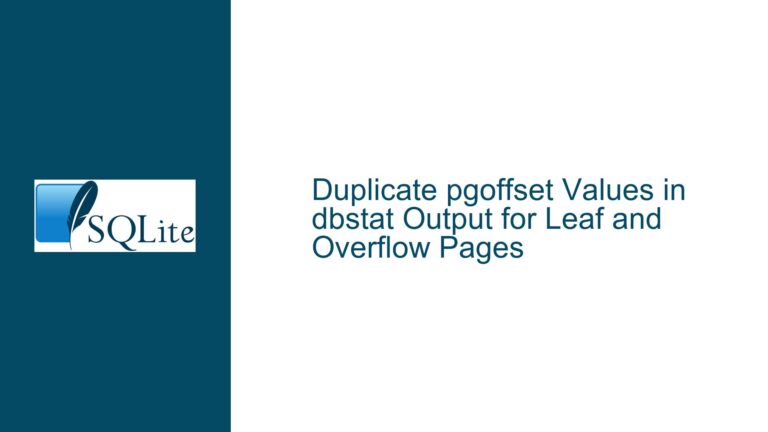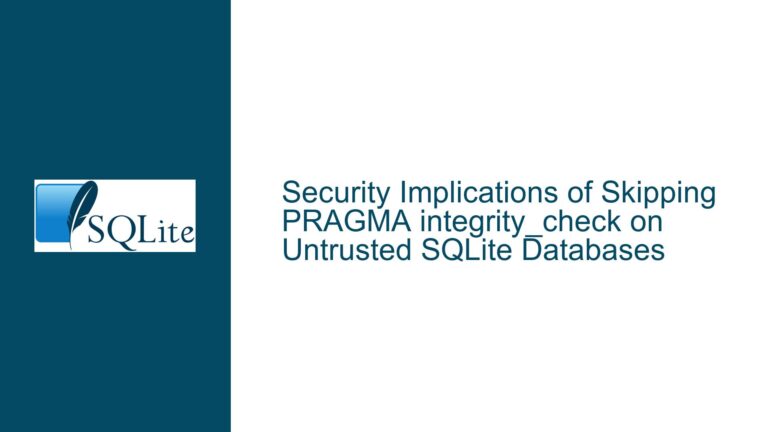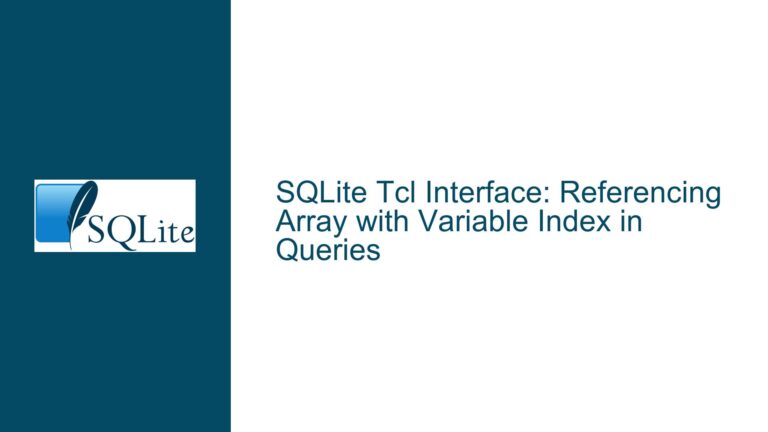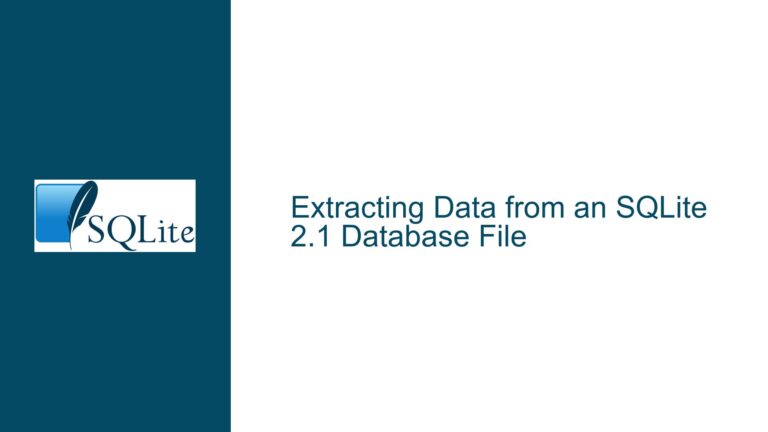SQLite MMAP PROT_WRITE Usage and Security Implications Analysis
Shared Memory Mapping Implementation in SQLite WAL Mode
SQLite employs memory-mapped I/O through the mmap system call when operating in Write-Ahead Logging (WAL) mode to enhance concurrency and performance. The unixShmMap function in os_unix.c handles shared memory region allocation using platform-specific memory protection flags:
int prot = pShmNode->isReadonly ? PROT_READ : PROT_READ|PROT_WRITE;
void *p = mmap(0, szRegion, prot, MAP_SHARED, pShmNode->hShm, ofst);
This implementation demonstrates two critical design decisions:
- Memory protection flags alternate between PROT_READ for read-only connections and PROT_READ|PROT_WRITE for read-write connections
- Complete absence of PROT_EXEC flag in any configuration
- Conditional mapping based on database connection mode
- Direct mapping relationship with WAL file operations
The shared memory region serves as coordination space for multiple database connections accessing the same WAL file. This mechanism enables:
- Atomic counter updates for transaction coordination
- Lock state tracking between processes
- WAL index header synchronization
- Cross-process synchronization without filesystem contention
Memory protection configuration follows strict principle of least privilege:
- Read-only connections cannot modify shared memory
- Read-write connections require write access for lock coordination
- Executable permissions explicitly excluded at all levels
Quokka Security Alert False Positive Identification
Security analysis tools like Quokka may generate false warnings due to:
- Overly broad heuristics for memory protection flags
- Misinterpretation of memory mapping use cases
- Lack of context awareness about SQLite internals
- Incorrect flag combination detection
- Failure to recognize WAL mode operational requirements
Key validation points for security tool warnings:
- Verify actual protection flags in mmap/mprotect calls
- Analyze memory region lifecycle and access patterns
- Check for presence of actual executable code
- Review address space layout randomization (ASLR) status
- Validate memory permission escalation paths
- Confirm write protection of underlying files
False positive indicators specific to SQLite usage:
- PROT_WRITE used without PROT_EXEC
- Memory regions mapped as MAP_SHARED
- File descriptors referencing database/WAL files
- Write operations limited to coordination structures
- No JIT compilation or code generation in mapped regions
Mitigation Strategies for Memory Protection Warnings
Resolution approaches vary based on specific security requirements:
1. Tool Configuration Adjustment
- Create exception rules for SQLite shared memory regions
- Whitelist mmap patterns matching SQLite signature
- Adjust heuristic sensitivity for PROT_WRITE|PROT_READ
- Implement path-based filtering for database files
- Add signature detection for SQLite memory management patterns
2. SQLite Configuration Tuning
PRAGMA locking_mode = EXCLUSIVE; -- Disables shared memory mapping
PRAGMA journal_mode = DELETE; -- Reverts to rollback journal mode
PRAGMA mmap_size = 0; -- Disables all memory mapping
3. Operating System Hardening
- Apply SELinux/AppArmor policies restricting mmap flags
- Use mprotect restrictions via seccomp filters
- Implement filesystem-level write protection
- Configure memory protection using kernel parameters
- Utilize capability-based security models
4. Application-Level Sandboxing
- Run SQLite connections in isolated processes
- Implement write-protected memory domains
- Use process virtualization for database operations
- Employ hardware-assisted memory protection
- Integrate with WebAssembly sandbox environments
5. Compile-Time Customization
Build SQLite with custom configuration:
SQLITE_OMIT_WAL=1 # Disable WAL mode completely
SQLITE_MAX_MMAP_SIZE=0 # Eliminate memory mapping
SQLITE_DIRECT_OVERFLOW_READ # Reduce I/O patterns requiring mapping
6. Runtime Monitoring Enhancements
- Implement custom mprotect hooking for flag validation
- Add memory permission change auditing
- Integrate with eBPF-based tracing systems
- Develop anomaly detection for memory access patterns
- Enforce control-flow integrity checks
7. Security Model Verification
Formal verification aspects to consider:
- Proof of non-executable memory regions
- Static analysis of memory permission transitions
- Dynamic taint analysis of mapped regions
- Information flow control validation
- Capability leakage detection
8. Alternative Synchronization Mechanisms
For environments prohibiting shared memory:
- Implement file-based locking primitives
- Use advisory file locks exclusively
- Develop userspace synchronization protocols
- Utilize RPC-based coordination services
- Adopt database-level transaction queuing
This comprehensive analysis provides multiple pathways for addressing false positive security warnings while maintaining SQLite’s performance characteristics and data integrity guarantees. Each mitigation strategy carries specific tradeoffs between security posture, functionality preservation, and performance impact that must be evaluated against application requirements.






